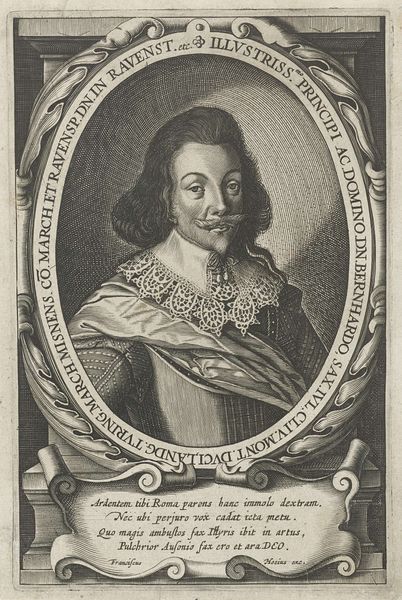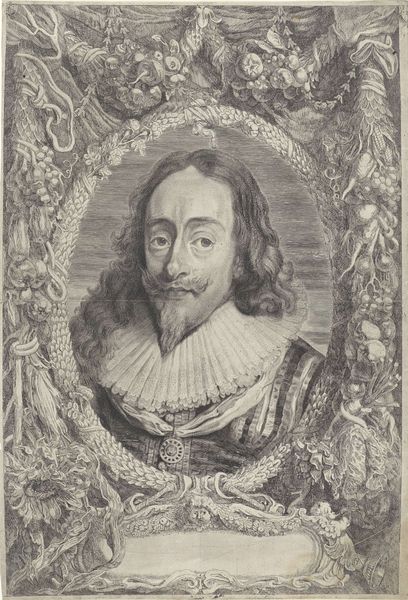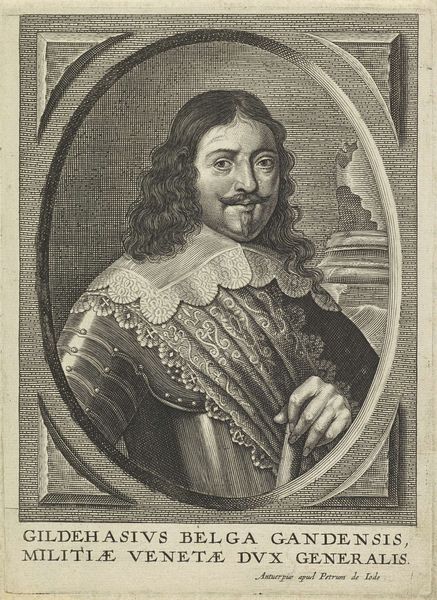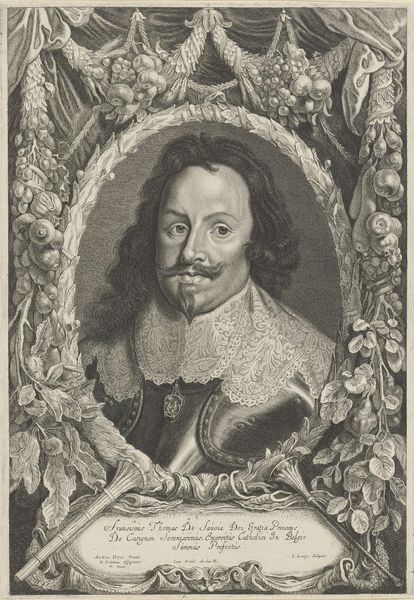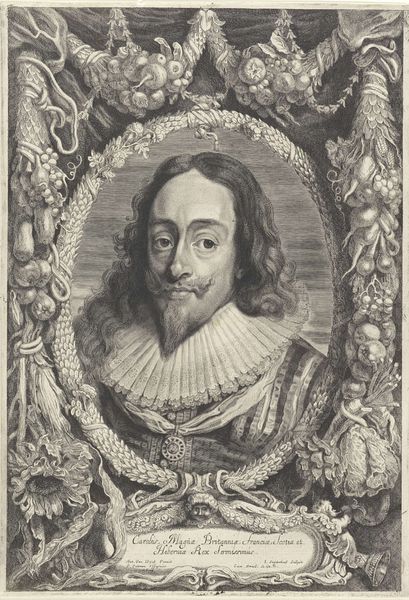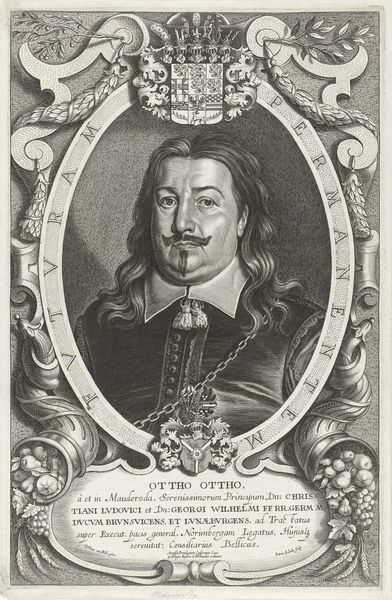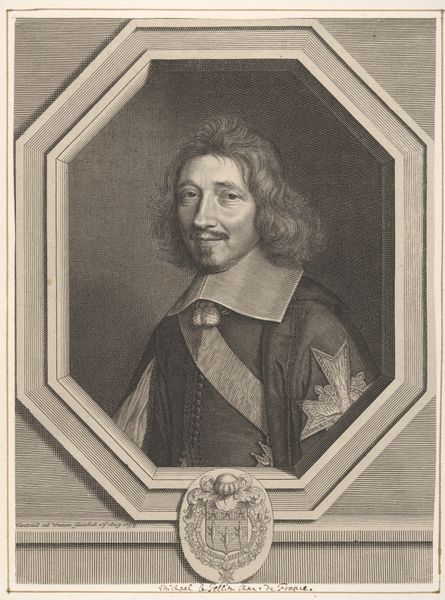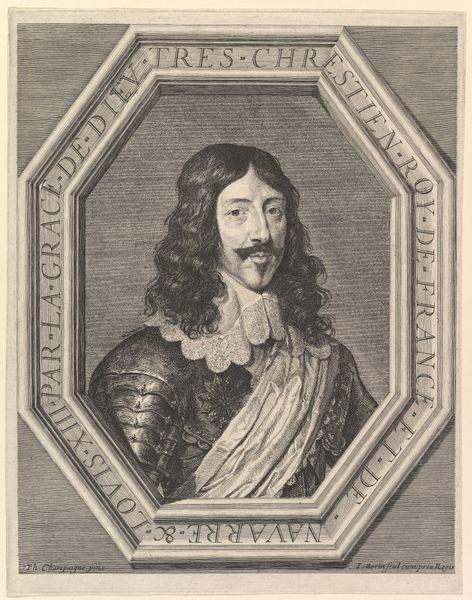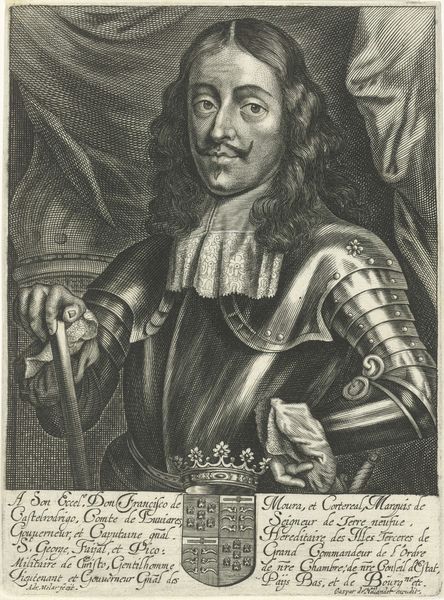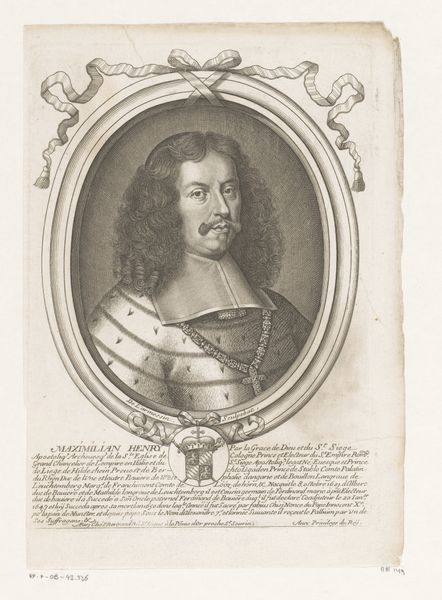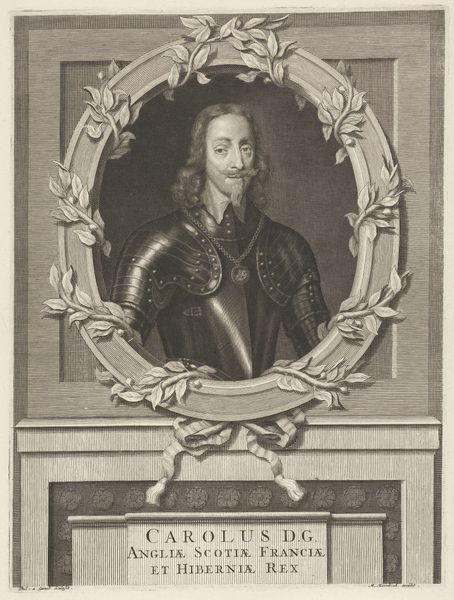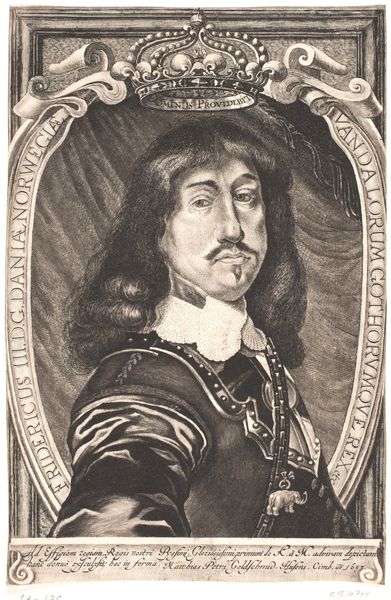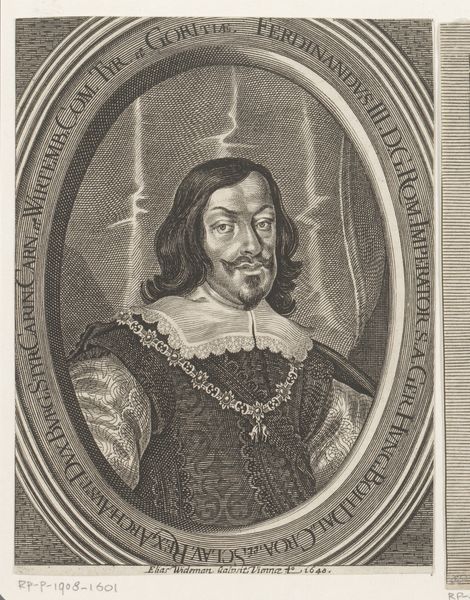
metal, engraving
#
portrait
#
baroque
#
metal
#
old engraving style
#
portrait reference
#
history-painting
#
engraving
Dimensions: height 444 mm, width 358 mm
Copyright: Rijks Museum: Open Domain
Curator: Standing here, we see an engraving titled "Portret van Ferdinand III" or, Portrait of Ferdinand III, after 1644, housed here at the Rijksmuseum. The artist is Pieter van Sompel. Editor: Wow, what strikes me immediately is the level of detail. It's almost overwhelming! You get lost in the textures – the armor, the lace collar, even the cherubic figures adorning the frame. It has a kind of formal severity about it but rendered with such delicate skill. Curator: Absolutely. Engravings like this one served a vital purpose. Before photography, disseminating a ruler's image was key to projecting power and establishing legitimacy across vast territories. Consider the Baroque style—with its characteristic ornamentation. Editor: The dragons flanking the crest up top feel ripped from a fairytale, a stark contrast to Ferdinand’s severe expression, or what looks to be a subtle eye-roll. How do you even make something like this on metal? Curator: The process involved meticulous handwork, etching lines into the metal plate, which would then be inked and used to create multiple impressions. Think about the cultural context too. Ferdinand III reigned during the Thirty Years' War—a period of intense religious and political upheaval in Europe. Images like this played a crucial role in constructing his image and bolstering morale, even as peace talks unfolded. Editor: Knowing that background, the image becomes almost like propaganda. The artistry tries to sell the stability Ferdinand theoretically offered while the battles still raged outside the frame. And yes, knowing this was done on metal really underscores its intent. How persistent and indelible can we make this all look? Curator: Exactly. It’s important to remember that these weren't passive artworks, they actively shaped public perception, which has lasting significance in our memory and legacy of power. Editor: It makes you wonder what portraits today, carefully curated for social media, will reveal about our leaders and society centuries from now. Everything's carefully edited for maximum control. Makes you think. Curator: Precisely, that's a crucial point. Examining portraits like this from a historical perspective offers a rich insight into power, representation, and the complex interplay of art and politics, that resonate into our modern world.
Comments
No comments
Be the first to comment and join the conversation on the ultimate creative platform.
